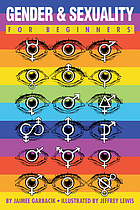Find more, and different, resources in the LGBTQIA Studies guide linked below.
Consider the resources linked below, and see the related LGBTQ Research Guide below
Linked below are just a few resources to consider.
Sources used on this page:
Armstrong, H. L. (Ed.). (2021). Encyclopedia of Sex and Sexuality: Understanding Biology, Psychology, and Culture (Vol. 1). Greenwood. https://link.gale.com/apps/pub/7JSE/GVRL?u=aubu98092&sid=bookmark-GVRL

Main Collection

Available online in eBook Central

Main Collection & Online in Ebsco Academic Collection
Heterosexism describes a behavioral system that denies, denigrates, and stigmatizes any non-heterosexual form of behavior, identity, relationship, or community. Heterosexism is often misused as synonymous with homophobia. However, heterosexism is the systemic display of homophobia within societal institutions, created through the assumption that the world is heterosexual and that heterosexuality is superior and normative. In the 1990s, queer scholars began referring to this as normative heterosexuality or heteronormativity. Heteronormativity illustrates the cultural dichotomy that exists between heterosexuality and homosexuality.
Heterosexism is analogous to sexism and racism, with similar parallels in the way it approaches issues in mainstream culture. Heterosexism uses the invisibility of homosexuality to minimize its existence while attacking it personally and institutionally when it becomes more visible. Historically, heterosexism has been found in large societal institutions like religion and law.
- From Encyclopedia of Sex and Sexuality: Understanding Biology, Psychology, and Culture, cited below
Homophobia is considered to be the fear of gay, lesbian, bisexual, or queer people or same-gender sexual behaviors. Homophobia is believed to result from learning and reinforcement over the life span; tolerance and acceptance of sexual minorities are also considered learned behaviors. The development of negative attitudes is often the result of both explicit teachings in an individual’s family, educational, or social setting (including some cultural and religious teachings) and implicit messages about the worth or characteristics of sexual minorities. Silence about sexual minorities’ experiences and the invisibility of sexual minority role models may also contribute to the development of homophobia.
-From, Encyclopedia of Sex and Sexuality: Understanding Biology, Psychology, and Culture
(cited below)
“Transphobia” refers to attitudes and beliefs about transgender people that stigmatize and antagonize people within the transgender community. The word “transgender” (or “trans”) is often used as an umbrella term to refer to any gender-nonconforming person, behavior, expression, or identity, including people who cross-dress, are transsexual, are genderqueer, are drag queens and kings, as well as a host of other terms that people use to categorize their gender.
-From, Encyclopedia of Sex and Sexuality: Understanding Biology, Psychology, and Culture
(cited below)
Many cultures traditionally referred to those who identified outside the gender binary as a third gender, but these individuals are commonly referred to as nonbinary within Western society. Nonbinary is an umbrella term to represent individuals who do not identify as exclusively female or male, including varying degrees of female and male, neither female nor male, another gender, or a combination of genders. The nonbinary umbrella includes genderqueer, genderfluid, bigender, trigender, among others as well as nonbinary as a gender, sometimes abbreviated as NB or enby.
-From, Encyclopedia of Sex and Sexuality: Understanding Biology, Psychology, and Culture
(cited below)
Note: You can find more definitions and terminology related to gender in the other boxes in this guide, such as Gender Pronouns
Consider the ebooks linked below to find definitions and background information on terms related to those you see here in this box.
 The Sage Encyclopedia of LGBTQ Studies
by
The Sage Encyclopedia of LGBTQ Studies
by